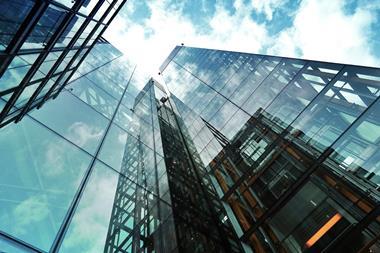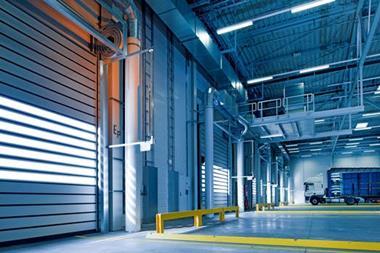Brazil has surged up the economic respectability league in recent years and is close to receiving an important quality mark as economic reform works its wonders. Hugh Collins reports
When Goldman Sachs first dubbed Brazil, Russia, India and China the ‘BRIC' economies, it sounded like nothing more than a buzzword for a selection of emerging markets with little in common. But on the streets of São Paulo, Brazil's status as a BRIC nation embodies the country's growing economy and increasing international confidence. For foreigners looking to buy into the city's bricks and mortar, São Paulo is a city with major financing needs and an appealing currency.
"São Paulo is a magnet that attracts investment," says Roberto Ordorica, vice-president of Prudential Real Estate Investors Latin America. "It is in need of everything: more and better housing, office centres, industrial facilities, shopping centres."
Maximo Lima, principal with Prosperitas private equity fund, says returns today can easily hit 15%. But while the city is expanding and developing its real estate stock, investors are piling into the marketplace like never before, and it's not certain that everyone will achieve the returns they are looking for.
The story of Brazilian success is best told by its currency, the real. When it was launched in 1994, the new currency was meant to represent a new era where Brazil would not be tortured by economic instability and chronic inflation. Fifteen years later, and the real is a point of pride. In the past five years, the currency has gone from being worth around 30 US cents, to almost 70 cents, buoyed up by soaring demand for such exports as soybeans and beef. More importantly, the demon of inflation that long plagued Brazil's currency has been tamed, falling from 15% in 2004 to barely 3% today.
For investors, such stability opens the door to investment, and the real's appreciation is a welcome hedge against the falling dollar. "A lot of people like the currency," Lima says. "They'd rather be exposed to the real than stay in the dollar."
On the ground, the more prosaic realities of São Paulo life offer enticing opportunities to real estate investors. Brazil is a powerhouse in agricultural exports, exporting around $40bn (€26bn) worth of foodstuffs in 2007, and São Paulo is the nation's gate to the world economy. But the city has not kept up. Production of soybeans has risen nearly 20% in the past five years. The race is now on to develop São Paulo in a such a way as to move the beans, coffee and sugar from the country's interior and on to the boats in as short a time as possible.
"We see Brazil as a major exporter of commodities," says Josh Pristaw, managing director of GoldenTree Asset Management. "There are a lot of opportunities to own logistics, warehouses, distribution centres."
In offices, too, there are killings to be made. Last year, there were nearly 70 IPOs on the São Paulo stock exchange, compared with only six in Mexico City. This, combined with falling interest rates (see below), has helped turn São Paulo into Latin America's premier business centre, with wages for investment bankers almost on a par with those in New York.
As in Mexico City, the office boom in São Paulo has led to plunging vacancy rates - barely 2% in the Berrini business sector. This puts cap rates at a zesty 9% on office buildings, but such investments come with a qualifier. For many years, the city's properties were bought and leased one floor at a time, rather than as continuous blocks. The upshot was that a single building could have a dozen different owners - an impossible situation to manage upkeep and sales of the property.
"The percentage of office stock with institutional ownership is quite small," Pristaw says.
"There are a lot of tenants with big needs, but who don't want to deal with multiple owners. "
To take advantage of the office boom, then, investors are increasingly looking to new developments. This allows investors to provide the kind of services that traditional Paulisto landlords have been unable to - multiple floors in a single building for leasing - but only if they can get in on a new development.
Brazil's returns have not gone unnoticed. LatinFinance magazine estimates that more than $5bn-worth of funds has gone into private equity funds focused on the real estate market in the past year. Such competition takes its toll. Even an expanding, investor-friendly market like Brazil has a limit to how much profitable investment it can handle. Lima estimates that the cap rate on an office investment in 2006 was around 11%, a full 2 percentage points higher than today.
Other sectors are also feeling the squeeze. Brazil's retail sector has long been a focus for investors. Brazil's history of hyperinflation frequently meant that workers would spend their salary the moment they received it - good news for major shopping outlets.
But while Ordorica describes the sector as "good properties with sophisticated companies," Lima is less optimistic. He feels that investors have crowded into the sector at such a rate that it's now hard to make a killing in the downtown area. "It's becoming increasingly hard to make your maths work out," Lima says. "Retailers have a hard time paying what you want."
For Lima, the solution is large-scale retail projects outside the main city area. But there's no doubt that the Brazilian story is well known, and just having a presence in São Paulo is not sufficient to stay ahead of the pack. "If you're waiting for big brokers like Jones Lang LaSalle or Cushman to bring opportunities to your door, it's not going to happen," Lima says. "The challenge is to put together a good team on the ground."
Amid the doom and gloom of 2008's Inter American Development Bank meeting in Miami, one bright spot stood out. Brazil's long march towards investment grade finally seems to be coming to a close. And the fact that it should receive the gong at a time when worries shake the global markets only serves to emphasize the attractiveness of São Paulo.
First of all is trade. São Paulo is a port city, after all, and a drop in exports is bad news for everyone. "Brazil is at the crossroads of trade in South America," Pristaw says. "So manufacturing and distribution is key. "
But while Mexico sends 80% of its exports to the flagging US market, and Colombia and Peru scramble for the right to do the same, Brazil has a blessedly diversified market. The European Union, whose growth continues at 1.75%, buys 22% of Brazil's exports, while trade with China surged by 40% in 2007.
The investment upgrade will bring its own benefits. Despite five years of steady growth, Brazil's interest rates still top 11%, compared with 7.5% in Mexico and 5.25% in Peru.
While inflation will remain a concern for Brazil, the upgrade could mean more consumer borrowing and cheaper money for investors, who currently pay around inflation plus a spread of 8-10%.
"Rates have been coming down for a while now," Lima says. " That should mean more credit."












